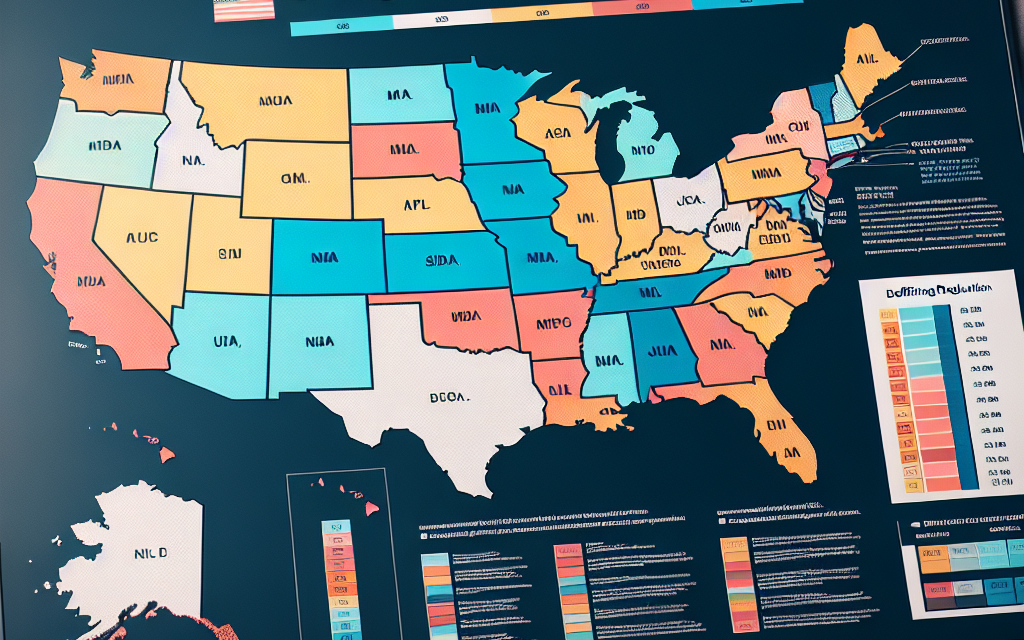State-by-State Overview of Semaglutide Regulations | Nextech
Semaglutide, a glucagon-like peptide-1 (GLP-1) receptor agonist, has gained significant attention for its effectiveness in managing type 2 diabetes and aiding weight loss. As its popularity has surged, so too have the regulations surrounding its prescription and use. This article provides a comprehensive state-by-state overview of semaglutide regulations across the United States, highlighting the nuances in legislation, prescribing practices, and access to this medication. We will explore five key subtopics: the regulatory landscape, prescribing practices, insurance coverage, patient access, and future trends in semaglutide regulation.
The Regulatory Landscape of Semaglutide
The regulatory framework governing semaglutide is primarily established by the Food and Drug Administration (FDA) at the federal level, but individual states have the authority to implement their own regulations. Understanding this landscape is crucial for healthcare providers and patients alike.
At the federal level, semaglutide is classified as a prescription medication, which means it cannot be obtained without a healthcare provider’s authorization. The FDA approved semaglutide for the treatment of type 2 diabetes in December 2019 and for chronic weight management in June 2021. The approval process involved rigorous clinical trials that demonstrated its efficacy and safety.
However, states have the power to regulate the prescribing of semaglutide in various ways:
- Prescribing Authority: Some states allow nurse practitioners and physician assistants to prescribe semaglutide, while others restrict this authority to physicians only.
- Telehealth Regulations: The rise of telehealth has changed how medications like semaglutide are prescribed. States differ in their acceptance of telehealth prescriptions, impacting patient access.
- Pharmacy Regulations: States may have specific regulations regarding how pharmacies can dispense semaglutide, including requirements for patient counseling and monitoring.
For example, in California, nurse practitioners can prescribe semaglutide under standardized procedures, while in Texas, they must have a supervisory or collaborative agreement with a physician. This disparity can create challenges for patients seeking treatment, particularly in rural areas where healthcare providers may be limited.
Prescribing Practices Across States
Prescribing practices for semaglutide vary significantly from state to state, influenced by local regulations, provider education, and patient demographics. Understanding these practices is essential for both healthcare providers and patients seeking treatment.
In states with more liberal prescribing laws, such as New York and California, healthcare providers have greater flexibility in prescribing semaglutide. These states often have comprehensive diabetes management programs that include education on lifestyle changes, medication adherence, and regular monitoring of blood glucose levels.
Conversely, in states with stricter regulations, such as Alabama and Mississippi, healthcare providers may face limitations that hinder their ability to prescribe semaglutide effectively. For instance, some states require prior authorization from insurance companies before a prescription can be filled, which can delay treatment and create barriers for patients.
Moreover, the level of provider education and training can impact prescribing practices. In states where there is a strong emphasis on continuing medical education regarding diabetes management, providers may be more likely to prescribe semaglutide. In contrast, states with less focus on diabetes education may see lower rates of semaglutide prescriptions.
Additionally, the patient population plays a significant role in prescribing practices. In urban areas with a higher prevalence of obesity and diabetes, providers may be more inclined to prescribe semaglutide as part of a comprehensive treatment plan. In rural areas, however, limited access to healthcare providers may result in fewer prescriptions being written.
Insurance Coverage for Semaglutide
Insurance coverage for semaglutide is a critical factor influencing patient access to this medication. Coverage policies can vary widely between states and insurance providers, impacting the affordability of treatment for many patients.
In general, most private insurance plans and Medicare Part D cover semaglutide, but the extent of coverage can differ. Some plans may require prior authorization or impose step therapy protocols, where patients must try and fail on other medications before being approved for semaglutide.
For example, in states like Florida and Texas, many insurance plans have adopted stringent prior authorization requirements for semaglutide, which can delay access for patients. In contrast, states like Massachusetts and New York have more favorable coverage policies, allowing for quicker access to the medication.
Additionally, the cost of semaglutide can be a significant barrier for uninsured patients or those with high-deductible plans. The average wholesale price of semaglutide can exceed $1,000 per month, making it unaffordable for many individuals without adequate insurance coverage.
To address these challenges, some states have implemented programs to assist patients in accessing semaglutide. For instance, California has established a state-funded program that provides financial assistance to low-income individuals with diabetes, helping them afford necessary medications like semaglutide.
Patient Access to Semaglutide
Patient access to semaglutide is influenced by a combination of regulatory, economic, and geographic factors. Understanding these barriers is essential for improving treatment outcomes for individuals with type 2 diabetes and obesity.
Geographically, access to semaglutide can vary significantly between urban and rural areas. In urban centers, patients often have multiple healthcare providers and pharmacies to choose from, increasing their chances of obtaining a prescription. However, in rural areas, patients may have limited access to healthcare providers who are knowledgeable about semaglutide and its benefits.
Economic factors also play a crucial role in patient access. As mentioned earlier, the high cost of semaglutide can be prohibitive for many individuals, particularly those without insurance or with high out-of-pocket costs. This economic barrier can lead to disparities in treatment outcomes, as individuals who cannot afford semaglutide may experience worsening diabetes control and related health complications.
Furthermore, educational barriers can impact patient access. Many patients may not be aware of semaglutide as a treatment option or may have misconceptions about its safety and efficacy. Healthcare providers play a vital role in educating patients about the benefits of semaglutide and addressing any concerns they may have.
To improve access, some states have initiated programs aimed at increasing awareness and education about semaglutide. For example, community health initiatives in states like Oregon and Washington have focused on providing information about diabetes management and available treatment options, including semaglutide.
Future Trends in Semaglutide Regulation
The landscape of semaglutide regulation is continually evolving, influenced by advancements in medical research, changes in healthcare policy, and shifts in public perception. Understanding these trends is essential for anticipating future developments in semaglutide regulation.
One significant trend is the increasing acceptance of telehealth as a viable option for prescribing semaglutide. The COVID-19 pandemic accelerated the adoption of telehealth services, and many states have since implemented more flexible regulations regarding telehealth prescriptions. This shift could improve access to semaglutide for patients in remote areas or those with mobility challenges.
Another trend is the growing emphasis on value-based care, which focuses on improving patient outcomes while controlling costs. As healthcare systems move toward value-based models, there may be increased pressure on insurance companies to provide better coverage for effective medications like semaglutide. This could lead to more favorable insurance policies and reduced out-of-pocket costs for patients.
Additionally, ongoing research into the long-term effects of semaglutide and its potential applications for other conditions may influence future regulations. As more data becomes available, regulatory agencies may adjust their guidelines and recommendations for semaglutide use, impacting prescribing practices across states.
Finally, advocacy efforts aimed at improving access to diabetes medications will likely continue to shape the regulatory landscape. Patient advocacy groups and healthcare organizations are increasingly pushing for policies that enhance access to effective treatments like semaglutide, which could lead to more uniform regulations across states.
Conclusion
The state-by-state overview of semaglutide regulations reveals a complex landscape influenced by federal guidelines, state laws, and individual healthcare practices. Understanding these regulations is crucial for healthcare providers and patients seeking effective treatment for type 2 diabetes and obesity.
As we have explored, the regulatory landscape varies significantly across states, impacting prescribing practices, insurance coverage, patient access, and future trends. While some states have embraced more liberal regulations that facilitate access to semaglutide, others impose barriers that can hinder treatment.
Moving forward, it is essential for stakeholders in the healthcare system to advocate for policies that enhance access to semaglutide and other effective treatments. By addressing the barriers to access and promoting education about diabetes management, we can improve health outcomes for individuals living with type 2 diabetes and obesity.
In summary, the journey toward equitable access to semaglutide is ongoing, and understanding the nuances of state regulations will be key to navigating this landscape effectively.





